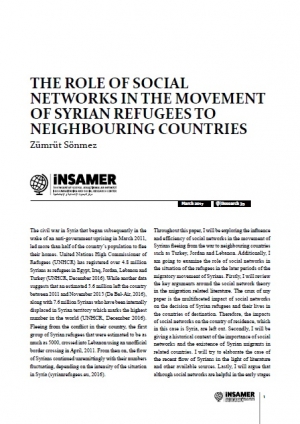The civil war in Syria that began subsequently in the wake of an anti-government uprising in March 2011, led more than half of the country’s population to flee their homes. United Nations High Commissioner of Refugees (UNHCR) has registered over 4.8 million Syrians as refugees in Egypt, Iraq, Jordan, Lebanon and Turkey (UNHCR, December 2016). While another data suggests that an estimated 5.6 million left the country between 2011 and November 2015 (De Bel-Air, 2016), along with 7.6 million Syrians who have been internally displaced in Syrian territory which marks the highest number in the world (UNHCR, December 2016). Fleeing from the conflict in their country, the first group of Syrian refugees that were estimated to be as much as 5000, crossed into Lebanon using an unofficial border crossing in April, 2011. From then on, the flow of Syrians continued unremittingly with their numbers fluctuating, depending on the intensity of the situation in Syria (syrianrefugees.eu, 2016).
Throughout this paper, I will be exploring the influence and efficiency of social networks in the movement of Syrians fleeing from the war to neighbouring countries such as Turkey, Jordan and Lebanon. Additionally, I am going to examine the role of social networks in the situation of the refugees in the later periods of the migratory movement of Syrians. Firstly, I will review the key arguments around the social network theory in the migration related literature. The crux of my paper is the multifaceted impact of social networks on the decision of Syrian refugees and their lives in the countries of destination. Therefore, the impacts of social networks on the country of residence, which in this case is Syria, are left out. Secondly, I will be giving a historical context of the importance of social networks and the existence of Syrian migrants in related countries. I will try to elaborate the case of the recent flow of Syrians in the light of literature and other available sources. Lastly, I will argue that although social networks are helpful in the early stages of the movement, they are not sustainable and are even subjected to collapse in the case of forced migration.
Click for the full report.










